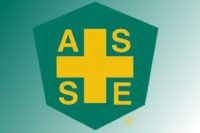 In a comment submitted to the Environmental Protection Agency (EPA) today concerning its proposed rule to set ‘significant new use rules (SNURs)’ for chemical substances, seven of which include the term carbon nanotubes, the American Society of Safety Engineers’ (ASSE) President Terrie S. Norris, CSP, ARM, CSPI, urged the EPA to rescind its sole reliance on personal protection equipment (PPE), especially respirators, and revise the rule to mandate implementation of feasible engineering controls in order to reduce a worker’s exposure to nanomaterials.
In a comment submitted to the Environmental Protection Agency (EPA) today concerning its proposed rule to set ‘significant new use rules (SNURs)’ for chemical substances, seven of which include the term carbon nanotubes, the American Society of Safety Engineers’ (ASSE) President Terrie S. Norris, CSP, ARM, CSPI, urged the EPA to rescind its sole reliance on personal protection equipment (PPE), especially respirators, and revise the rule to mandate implementation of feasible engineering controls in order to reduce a worker’s exposure to nanomaterials.
Norris said the EPA should not ignore established industrial hygiene and safety practices, the National Institute for Occupational Safety and Health (NIOSH)’s report on safe nanotechnology in the workplace report, and its own research by not requiring the hierarchy of engineering controls to be followed to protect workers. ASSE said EPA’s reliance on respiratory protection to protect workers from carbon nanotubes and fullerenes, molecules composed entirely of carbon, proposed in this rule would not provide the needed worker protections. ASSE also notes the proposed rule would not be consistent with the general duty clause of the Occupational Safety and Health Act of 1970 (OSH Act) which specifies how employers must protect employees.
“An appropriate risk assessment based on the hierarchy of controls requires that engineering controls be considered first, and if deemed feasible, implemented before considering the use of personal protective equipment (PPE) such as respirators, gloves and clothing. Yet, no mention is made of engineering controls in EPA’s required protections,” Norris wrote. “Also, the EPA’s proposed rule, if followed by our members, would put them in a position of being in violation of the Occupational Safety and Health Administration (OSHA) and state-plan OSHA standards."
The proposed new rules are part of the Toxic Substances Control Act (TSCA) for 17 chemical substances; seven of those include the term carbon nanotube, subject to pre-manufacture notices. If adopted this rule would require anyone who intends to manufacture, import, or process any of these chemical substances for a significant new use to notify EPA at least 90 days before beginning that activity. This would give the EPA an opportunity to evaluate the intended use and to prohibit or limit that activity before it occurs if needed.
Within each SNUR for a carbon nanotubes and fullerenes included in this proposed rule, EPA states that the substance presents unreasonable risks to human health or to the environment, including generally pulmonary toxicity, fibrosis, carcinogenicity, mutagenicity, and immunotoxicity.
“Given those risks to workers, EPA’s sole reliance on PPE for protection against carbon nanotubes is contrary to long-recognized understanding of good industrial hygiene and safety practice that calls for employers to apply the hierarchy of controls in addressing health and safety risks,” said Norris. “An appropriate risk assessment based on the hierarchy of controls requires that engineering controls be considered first, and if deemed feasible, implemented before considering the use of PPE such as respirators, gloves and clothing. Yet, no mention is made of these engineering controls in EPA’s protections.”
NIOSH’s ‘Progress Toward Safe Nanotechnology in the Workplace’ report identifies a hierarchy of controls that specifies use of engineering and administrative controls before the use of respirators. Also, the ANSI/ASSE Z590.3-2011 standard ‘Prevention Through Design: Guidelines for Addressing Occupational Hazards and Risks in Design and Redesign Processes’ specifies the need for risk avoidance, elimination, reduction or control, and emphasizes that mitigation actions through design/redesign initiatives or changes in work methods should be implemented before incidents or exposures occur.
“Against this evidence of the widest acceptance of this risk-based approach to managing safety and health risks, the EPA’s SNURs do not even consider engineering controls,” Norris said.
Norris also noted that the EPA has failed in this proposal to incorporate its own recommendations for the use of engineering controls found in its February 2007 white paper on nanotechnology which stated: “Engineering controls, and particularly those used for aerosol control, should generally be effective for controlling exposure to airborne nanoscale materials.”
Norris said that a rule cannot stand it if it not based on EPA’s own understanding about how to protect workers.
ASSE objects to lack of worker protection in EPA's proposed new rule
Looking for a reprint of this article?
From high-res PDFs to custom plaques, order your copy today!








